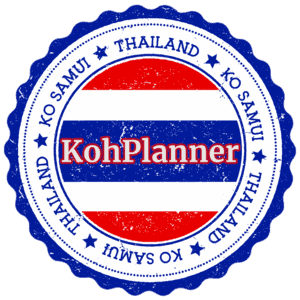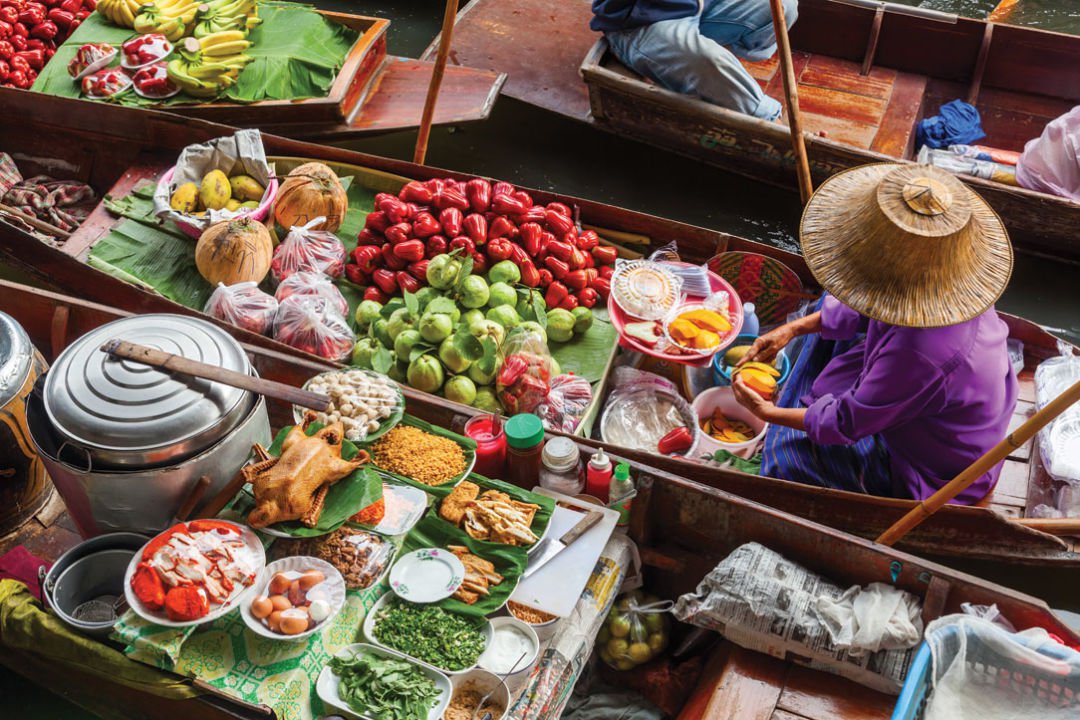Dual Pricing in Thailand
Thailand is a beautiful and culturally diverse country that attracts millions of tourists every year, thanks to its stunning landscapes, rich heritage, and warm hospitality. As a visitor, is better to acknowledge and accept beforehand, you might encounter the dual pricing system, a practice where locals and foreigners are charged different rates for the same goods and services. In this article, we will help you understand dual pricing in Thailand from various perspectives, the past efforts to address the issue, why regulation has not been successful and the possible long-term consequences of dual pricing. At the end, you will find useful phrases and numerals to keep in mind.
*KohPlanner Disclaimer
At KohPlanner, we understand this subject raises sensitivities, and we do not position ourselves in favour of or against it. The dual pricing issue is complex, with valid arguments on both sides, and we believe transparency is the key. Visitors should understand the facts about dual pricing when looking at a price list, to be able to make an informed decision before paying.
What is dual pricing?
Dual pricing is when businesses charge different prices for locals and foreigners for the same product or service. This practice can be found in other countries and is used frequently everywhere in Thailand, where the cost of living is comparatively low. The dual pricing system is noticeable in various sectors, including public transportation, tourist attractions, and even in restaurants and shops.
Dual pricing has attracted attention in Thailand because of its booming tourism industry. In 2019 alone, the country welcomed nearly 40 million tourists, contributing significantly to its GDP. However, dual pricing has raised concerns among tourists, expatriates, and some locals who argue that it creates an unfair and unwelcoming environment.

Different Points of View
Support for Dual Pricing
Some proponents of dual pricing argue that it helps support local communities by allowing them to benefit from the influx of tourism revenue. They maintain that higher prices for foreigners are justified because tourists typically have more disposable income than locals. Furthermore, they argue that the increased revenue helps maintain and improve infrastructure and tourist attractions, ultimately benefiting the country and its people.
Opposition to Dual Pricing
On the other hand, opponents of dual pricing argue that the practice is discriminatory and tarnishes the country's reputation. They contend that dual pricing can create resentment among tourists, leading to negative reviews and a potential decline in tourism. Opponents claim that dual pricing could harm the economy by inhibiting repeat visitors and long-term expat settlements, both of which contribute significantly to the economy.
Past Efforts and the Failure of Regulation
Over the years, the Thai Government has made various attempts to address the issue of dual pricing. However, many of these efforts have been met with limited success.
Price Caps and Guidelines
In some instances, the government has attempted to implement price caps and guidelines to control dual pricing. In 2018, the Department of National Parks, Wildlife, and Plant Conservation introduced a standardized entrance fee for national parks, with different prices for locals and foreigners. However, such regulations have been difficult to enforce, and some businesses continue to charge significantly higher prices than the stipulated for foreigners.
Public Awareness Campaigns
The government has also tried to raise public awareness about the negative impact of dual pricing on tourism through media campaigns. However, these efforts have been met with mixed results. Many businesses still practice dual pricing, either out of lack of understanding or because they prioritize immediate profits over long-term consequences.
Encouraging Voluntary Compliance
Another approach has been to encourage businesses to voluntarily abandon dual pricing practices. The Tourism Authority of Thailand (TAT) has launched initiatives, such as the "Amazing Thailand Safety and Health Administration" (SHA) certification, which recognizes businesses that adhere to fair pricing policies. However, participation in these programs is voluntary, and many businesses have chosen not to comply.

OUR TIPS WHEN VISITING THAILAND
Research Prices
Before visiting a tourist attraction, restaurant, or booking accommodation, do some research to get an idea of the expected prices. This will help you identify instances of dual pricing and allow you to make informed decisions about where to spend your money.
Learn Basic Thai Phrases
Learning a few basic Thai phrases can help you navigate the dual pricing system. Being able to speak even a little Thai can show respect for the local culture and may encourage businesses to offer you a more reasonable price.
Negotiate Respectfully
In some cases, it may be possible to negotiate a lower price if you believe you are being charged unfairly. Approach the negotiation with respect and a friendly attitude, as this is more likely to result in a positive outcome.
Support Fair-Pricing Businesses
Choose to support businesses that have adopted fair pricing policies or are part of recognized programs like the "Amazing Thailand Safety and Health Administration" (SHA) certification. By supporting these businesses, you can promote fair pricing practices in the tourism industry.

Possible Long-Term Consequences
If dual pricing remains unresolved, it could have several long-term consequences for Thailand and its tourism industry:
Damaged Reputation
Continued dual pricing practices could lead to negative perceptions of Thailand as a tourist destination, potentially discouraging visitors and impacting the country's economy.
Reduced Repeat Visits and Expatriate Settlement
As mentioned earlier, dual pricing can create resentment among tourists and expatriates, making them less likely to return for future visits or choose Thailand as a long-term home. This could result in a decline in tourism and reduced investment from expatriate communities, both of which are essential contributors to the Thai economy.
Social Division
Dual pricing can also contribute to social divisions between locals and foreigners. Locals may come to view foreigners as a source of easy income, while foreigners may feel exploited and unfairly treated. This can lead to a lack of cultural exchange and understanding, creating an unwelcoming environment for tourists and expatriates.


SUMMARY
While the practice can generate additional revenue for businesses and help support local communities, the long-term consequences of dual pricing cannot be ignored. These consequences include a damaged reputation, reduced repeat visits and expatriate settlement, and social division.
To get the best deal while supporting ethical businesses, conduct thorough research on prices, familiarize yourself with basic Thai phrases, and engage in respectful negotiations. This can also contribute to positive change in the Thai tourism industry.
For the time being, the dual pricing system in Thailand is likely to stay. We recommend making peace with this fact before visiting Thailand and use our tips to get more value and improve your experience.
Basic Words & Phrases in Thai to help you navigate the dual pricing system in Thailand:
- Hello: สวัสดี (sawasdee)
- Thank you: ขอบคุณ (khob khun)
- Excuse me/ Sorry: ขอโทษ (khaw thot)
- How much?: เท่าไหร่ (thao rai)
- Can you give a discount?: ลดราคาให้หน่อยได้ไหม (lot ra-ka hai noi dai mai)
- I am not a tourist, I live here: ฉันไม่ใช่นักท่องเที่ยว ฉันอาศัยอยู่ที่นี่ (chan mai chai nak thong thiao, chan a-sai yoo tee nee)
- Local price, please: ขอราคาคนในประเทศหน่อยครับ/ค่ะ (khor ra-ka khon nai pra-thet noi khrap/kha)
- Too expensive: แพงเกินไป (paeng goen bpai)
Remember to use polite language when speaking with locals. In Thai, this means adding "khrap" (ครับ) at the end of the sentence if you are male, and "kha" (ค่ะ) if you are female.
Learning these phrases can help you communicate more effectively with locals and show respect for their culture. In some cases, this might encourage businesses to offer you a more reasonable price or even the local rate. Negotiating should be done with a friendly and respectful attitude.
Understanding Thai numbers and their written form can help you identify dual pricing on signs or menus. Here are the Thai numbers from 1 to 10, along with their written forms:
- One: หนึ่ง (nung) ๑
- Two: สอง (song) ๒
- Three: สาม (saam) ๓
- Four: สี่ (see) ๔
- Five: ห้า (haa) ๕
- Six: หก (hok) ๖
- Seven: เจ็ด (jet) ๗
- Eight: แปด (bpaaet) ๘
- Nine: เก้า (gaao)๙
- Ten: สิบ (sip) ๑๐
- Twenty: ยี่สิบ (yee sip) – ๒๐
- Thirty: สามสิบ (saam sip) – ๓๐
- Forty: สี่สิบ (see sip) – ๔๐
- Fifty: ห้าสิบ (haa sip) – ๕๐
- Sixty: หกสิบ (hok sip) – ๖๐
- Seventy: เจ็ดสิบ (jet sip) – ๗๐
- Eighty: แปดสิบ (bpaaet sip) – ๘๐
- Ninety: เก้าสิบ (gaao sip) – ๙๐
- Hundred: ร้อย (roi) – ๑๐๐
- Two hundred: สองร้อย (song roi) – ๒๐๐
- Three hundred: สามร้อย (saam roi) – ๓๐๐
- Four hundred: สี่ร้อย (see roi) – ๔๐๐
- Five hundred: ห้าร้อย (haa roi) – ๕๐๐
- Six hundred: หกร้อย (hok roi) – ๖๐๐
- Seven hundred: เจ็ดร้อย (jet roi) – ๗๐๐
- Eight hundred: แปดร้อย (bpaaet roi) – ๘๐๐
- Nine hundred: เก้าร้อย (gaao roi) – ๙๐๐
- One thousand: หนึ่งพัน (nung phan) – ๑,๐๐๐
- Thousand: พัน (phan) – ๑,๐๐๐
- Two thousand: สองพัน (song phan) – ๒,๐๐๐
- Three thousand: สามพัน (saam phan) – ๓,๐๐๐
- Four thousand: สี่พัน (see phan) – ๔,๐๐๐
- Five thousand: ห้าพัน (haa phan) – ๕,๐๐๐
- Six thousand: หกพัน (hok phan) – ๖,๐๐๐
- Seven thousand: เจ็ดพัน (jet phan) – ๗,๐๐๐
- Eight thousand: แปดพัน (bpaaet phan) – ๘,๐๐๐
- Nine thousand: เก้าพัน (gaao phan) – ๙,๐๐๐
- Ten thousand: หนึ่งหมื่น (nung meuun) – ๑๐,๐๐๐
By familiarizing yourself with these Thai numerals, you will able to identify prices and dual pricing practices in Thailand.






